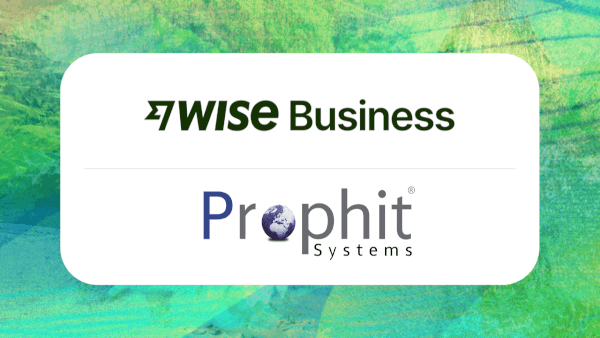Can a Sole Trader Have Employees? Rules & Guide
Unsure if a sole trader can hire employees? Learn the rules, legal obligations, and benefits of employing staff as a sole trader in Australia.

While affiliate marketing might seem like a relic from the early days of digital advertising, the reality tells a dramatically different story. Far from being an outdated marketing strategy, affiliate marketing is experiencing unprecedented growth and evolution.
The industry's numbers are climbing steadily, with participation from a more diverse range of marketers and brands than ever before. Most telling of all? The global affiliate marketing industry is projected to reach a staggering $27.78 billion by 2027¹.
Businesses know that this is one of the few marketing methods where you only pay for actual results, and that's exactly why it stays relevant while gaining more traction.
In this article, we’ll break down what affiliate marketing really is, how it works, who’s involved, and why it’s quietly becoming one of the biggest growth engines online.
| Table of contents |
|---|
Affiliate marketing is a performance-based strategy where brands pay third-party partners a commission for driving customers to their business through the partner's own promotional channels, typically tracked through unique referral links. Think of it as businesses saying, “You send people my way; I’ll give you a cut.”
In general, these are the parties involved with the whole affiliate marketing process:
First, the business sets things up. They decide the commission, make tracking links, and hand over whatever promotional material the affiliates might need.
Then the affiliates start sharing. This could be a blog post, a quick video, a story on social media, or even an email, but they’ll always drop in their affiliate link that has the tracking code.
If a customer clicks the affiliate link and makes a purchase, it counts as a success. The platform notes the sale and associates it with the right affiliate while keeping both parties informed on whether there were conversions from the affiliate link or not.
If it is a success, the business sends over the commission, and the cycle starts all over again for a new purchase. But that's not the only commission model around. Let us look at the most common models being used by businesses.
Not all affiliate programs pay the same way. Here are some common commission models you might come across:
Affiliates and influencers powered one-fifth of all U.S. e-commerce sales on Cyber Monday 2024. On top of that, products with affiliate links were six times more likely to be purchased than those without.2
Why? Because people trust someone they follow far more than an ad they didn’t ask to see.
Example: A skincare brand offers beauty YouTubers 10% per sale. One creator does a 30-day review, shows before-and-after shots, and drops their link in the description. A viewer clicks, buys, and the sale is instantly tracked. The creator sees the sale pop up in their dashboard (some even get an email every time) and gets paid at the month’s end. The brand? They’ve reached a new audience and only paid for actual sales.
Affiliates make it easier to convert interest into actual purchases because of the 'pre-built trust' factor. Over time, this approach creates a steady stream of new and returning customers, paving the way for sustainable growth for businesses.
If you wish to get into affiliate marketing, here’s a simple 5-step guide with examples of programs you can explore at each stage.
First thing — decide where you’re actually going to post stuff and what kind of content feels natural for you.
Not all affiliate programs are the same. Some have loads of brands under one login, others are direct with just one company.
Don’t choose products just for the payout. Pick ones you genuinely recommend and that fit your strengths as a promoter.
This could be a blog post, a video, or an Instagram story. Show why it’s useful, mention pros and cons, keep it honest. People trust that more.
And it is always better to tell your customers if it’s an affiliate link.
Affiliate dashboards usually show how many people clicked your links, how many bought something, and how much commission you’ve earned. Review these numbers regularly.
If a product is getting clicks but no sales, adjust your approach, change how you present it, or try promoting a different product. Experiment with formats, move links to new spots, and see which setup gets the best results.
A good affiliate plan goes beyond just joining programs. It’s all about making intentional moves that keep your audience hooked and your sales on the rise. Here are some go-to tips to help you strategize better.
When a brand's growth strategy relies on affiliate marketing, a critical challenge often overlooked is the payment process. The complexities of paying a global network of affiliates can turn a successful program into a logistical nightmare.
Issues like slow bank transfers, high transaction fees, and unfavorable foreign exchange rates can significantly erode an affiliate's earnings. Addressing these payment frictions with a modern, efficient system is essential for any brand looking to scale its affiliate program and maintain strong, lasting relationships with its partners.
That’s where cross-currency payment solutions like Wise Business come into play. Users get access to multi-currency business accounts that enable businesses to send, receive, and hold money in multiple currencies at the mid-market exchange rate. This transparency, combined with low, upfront fees and a streamlined platform, makes it an ideal tool for businesses and freelancers who rely on cross-border transactions, such as paying a global network of affiliates.
Wise Business helps streamline overseas business payments without foreign transaction fees, saving up to 3x compared to other providers.
Tired of hidden fees and complex processes when making overseas payments?
Start sending with a Wise Business account! 🚀
This general advice does not take into account your objectives, financial circumstances or needs and you should consider if it is appropriate for you.
Sources:
*Please see terms of use and product availability for your region or visit Wise fees and pricing for the most up to date pricing and fee information.
This publication is provided for general information purposes and does not constitute legal, tax or other professional advice from Wise Payments Limited or its subsidiaries and its affiliates, and it is not intended as a substitute for obtaining advice from a financial advisor or any other professional.
We make no representations, warranties or guarantees, whether expressed or implied, that the content in the publication is accurate, complete or up to date.

Unsure if a sole trader can hire employees? Learn the rules, legal obligations, and benefits of employing staff as a sole trader in Australia.

Learn how to lodge your BAS in Australia. Our guide covers what to include, from GST to PAYG, key due dates, and best practices to stay compliant with the ATO.

Discover if a virtual assistant is right for your business. This guide covers the types of VAs, their duties, managing them, along with the pros and cons.

Read on how Prophit Systems saved up to 9x on global payroll by switching to Wise Business, saving over 10+ hours a month in admin time.

Essential invoice payment terms for Australian businesses. From Net 30 to PIA, discover best practices to improve cash flow and get paid faster. Read now!

Learn how the OFX business account works, its features, and how it compares to other international payments solutions. Find out more here!